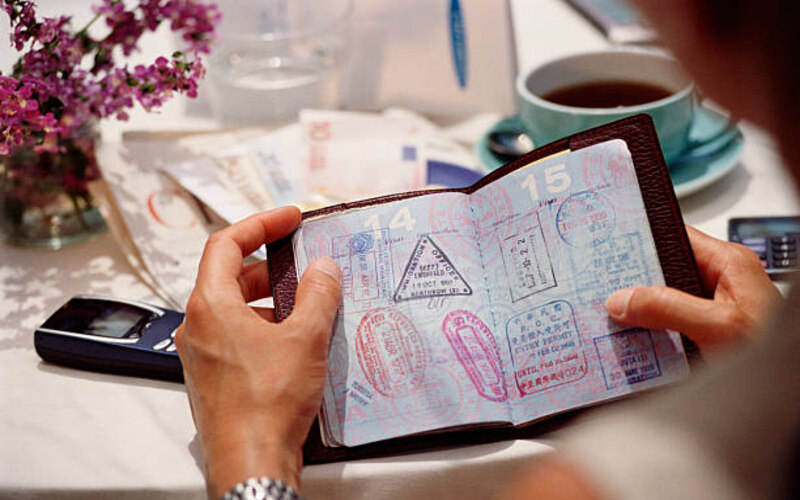Planning a trip to Russia requires careful attention to the visa application process, especially if you’re applying for a tourist visa. One of the most important steps after submitting your visa application is tracking its status to ensure everything is on schedule. In 2024, the process of checking your Russia Visa status has been made easier with online tools that allow you to monitor your application from anywhere. Whether you’re applying for a regular tourist visa or an e-visa, knowing how to track your application can help you avoid delays and ensure a smooth travel experience.

This guide will walk you through the steps for checking the status of your Russia tourist visa, including how to use the official Russian Federation website, what details you need to provide, and how to address common issues. By staying informed, you can make your travel to Russia hassle-free and well-prepared.
Here are some Russia tourist visa checks: How to Track Your Application Status in 2024
1. Tracking Your Russia e-Visa Application:

Organizing a trip to Russia involves careful planning, and monitoring your visa application is one of the most crucial steps. It is essential to check the status of your Russia e-visa application in order to prevent travel interruptions. It can save you time and worry to know how to check the status of your Russia visa, regardless of whether you are applying for an e-visa or a single-entry visa. Everything Indian applicants need to know about tracking their Russia visa is covered in this guide, including how to use the official Russian Federation website and navigate the various e-visa application stages. We’ll also look at how to check for a Russia visa using your passport number and get some advice on how to solve common problems. Stay with us to ensure a trouble-free, seamless trip to Russia.
2. Requirements for Checking Your Russia Visa Status Online:

In order to verify the status of a Russian visa online, particularly an e-visa, you must fulfil specific prerequisites and prepare the following data. The following is necessary for a seamless experience:
- Notification of E-Visa Grant: Digital components such as QR codes and PDF417 codes may be included in the e-visa notification issued by the Russian Ministry of Foreign Affairs. With these codes, you can access the online platform directly, which will facilitate checking the status of your e-visa more easily.
- Application ID: This is a special number that appears on the notification of your e-visa grant. This ID is required to identify your particular application in the system, so you’ll need it to check the status of your application.
- Verification Code: The Verification Code, which is located on the e-visa grant notification, is required in addition to your Application ID. You can verify your identity and see the status of your application with this code.
3. Step-by-Step Guide to Checking Your Russia Visa Status Online:

Check the status of your Russia visa on the Russian Federation website.
Start by going to the official website of the Russian Federation’s Ministry of Foreign Affairs’ Consular department to check for a visa to Russia online. Here is a step-by-step tutorial to assist you with the procedure:
- Step 1: Visit the Website: Open the Russian Federation’s Ministry of Foreign Affairs’ Consular Department website. To access the visa status service, start here.
- Step 2: Locate the section on E-Visa Status. Navigate down the homepage to access the “Check an e-visa status” option. To access the visa status checker, click this link.
- Step 3: Provide Your Information Two pieces of information must be entered into the e-visa status page:
- Application ID: Your individual application ID for a visa is this.
- Verification Code: To view the status of your visa, you must enter the code that was emailed to you during the application process.
- Step 4: Submit: Click the “Status Check” button to send your request after inputting your application ID and verification code.
4. Comprehending Your Visa for Russia
There are various steps involved in the application process for a visa. The following describes each status and what to do:
- Draft Preserved: Although your application has been started, it has not yet been finished or submitted for review. When you’re ready, complete each section and submit.
- Requires Payment: The consular fee payment has not yet been processed or is still pending. Proceed with your application after verifying the payment details and transaction completion.
- Application Processing is Underway: We are examining your application. This status indicates that the visa processing team is reviewing your application.
- Correction Needed: In the event that mistakes or missing data are discovered during the preliminary processing, this status is displayed. Examine your application, make the required adjustments, and submit it again. The most recent submission for processing will be reflected in the submission timestamp.
- Complete Processing: Your application has been given a decision. You can now download a PDF file containing your application’s results.
Conclusion
Tracking the status of your Russian tourist visa is a crucial step to ensure a smooth travel experience in 2024. With the increasing ease of digital processes, staying updated on your visa application status has become more convenient. Knowing how to check your visa status helps avoid unexpected delays and allows you to plan your trip confidently.
In this guide, we’ll explore how to efficiently track your Russia visa application using the official resources provided by the Russian Federation. From accessing the visa tracking portal to understanding the status updates, this guide will provide you with clear instructions to navigate the system effectively. By following these steps, you can ensure that your journey to Russia is well organized and free from any last-minute complications.
Read more:




